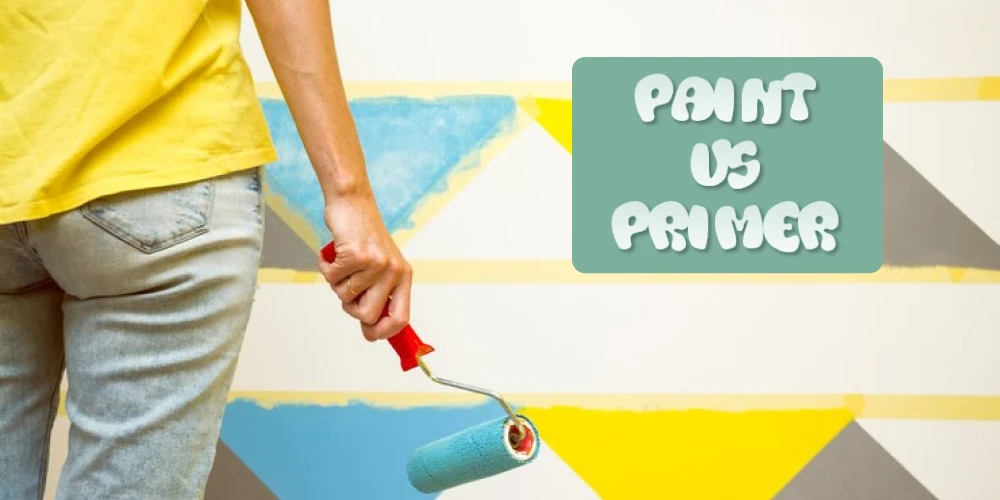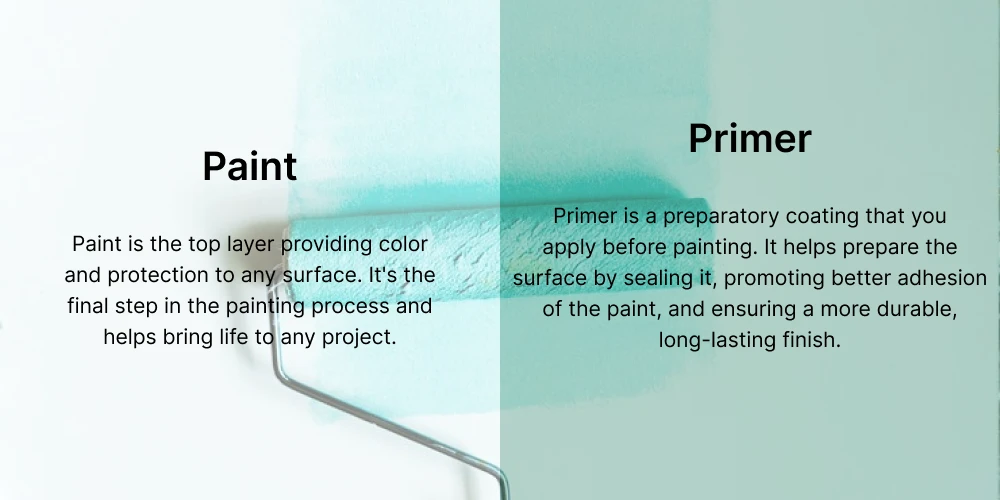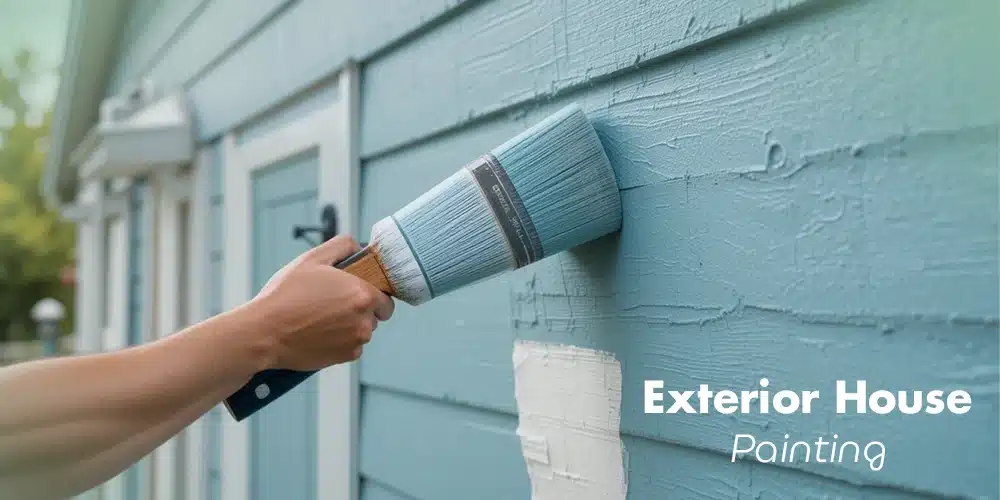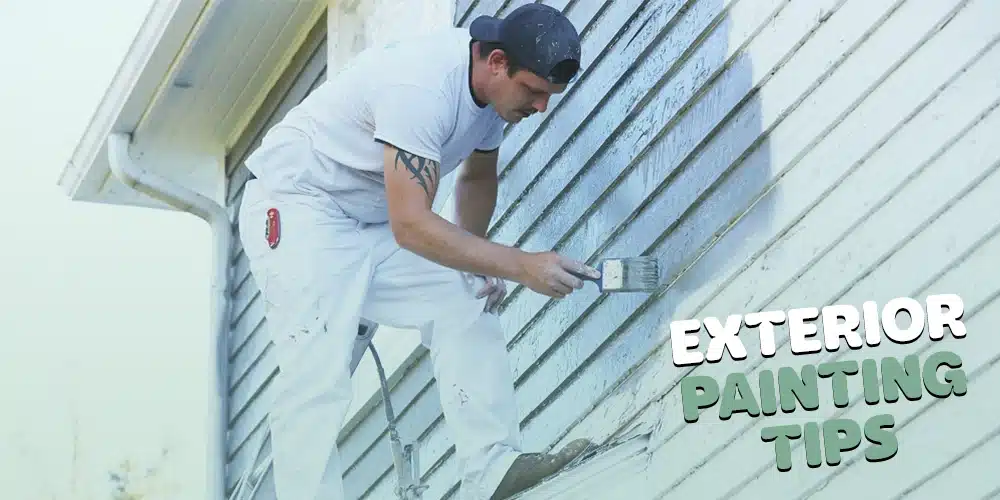If you’re about to dive into a painting project—whether it’s freshening up your living room, revamping an old piece of furniture, or giving that worn-out fence a makeover—you’ve probably wondered: Do I really need primer, or can I just go straight to the paint? While it might seem like they do the same job, there’s a huge difference between paint and primer. Think of paint as the stylish jacket that makes everything look good, while primer is the foundation that helps the jacket stay in place. In this post, we will break down exactly what sets these two apart, why you need both, and how using them correctly can give you that perfect, long-lasting finish. Stick with us—you’ll be surprised at how much of a game-changer this can be!
What is Paint?
Paint is the top layer providing color and protection to any surface. It’s the final step in the painting process and helps bring life to any project. Paint is made up of four primary components: pigments, binders, solvents, and additives.
When considering how much paint to buy for your next project, the costs can really add up. Check out our guide on Cost to Hire a Painter to help plan your budget.
Key Components of Paint:
- Pigments are the paint’s color-producing elements. They come in organic and inorganic forms, and their quality influences the longevity and vibrancy of the color. Titanium dioxide, for instance, is a common white pigment used in high-quality paints due to its durability and excellent coverage.
- Binders: Also known as resins, these are substances that hold the pigment particles together and help the paint adhere to the surface. The binder also helps the paint dry and harden once applied.
- Solvents: These are liquids used to dissolve the binder and pigments, making the paint easier to apply. Solvents evaporate as the paint dries, leaving the solid components to adhere to the surface.
- Additives: These ingredients are included to enhance specific properties of the paint. For example, antifungal agents can be added to outdoor paints to prevent mildew growth or leveling agents can be used to ensure a smooth finish.
Types of Paint and Their Uses:
- Latex Paint (Water-Based):
- Benefits: Latex paints are the most common due to their ease of use, fast drying times, and water cleanup. They also have a low odor and are generally safer to work with, making them ideal for interior projects.
- Uses: Latex is perfect for interior walls, ceilings, and trim. It works well on drywall, plaster, and previously painted surfaces.
- Oil-Based Paint:
- Benefits: Oil-based paints offer superior durability, making them ideal for areas with heavy traffic or where surfaces are subject to wear and tear. They create a hard, glossy finish.
- Uses: Oil paints are commonly used for trim, doors, windows, and furniture. They are also excellent for painting metal surfaces.
- Chalk Paint:
- Benefits: This paint creates a matte, velvety finish that is very trendy for furniture restoration. It adheres to almost any surface without sanding or priming.
- Uses: Primarily used for furniture, cabinets, and home décor projects.
- Enamel Paint:
- Benefits: Enamel paints offer a durable, hard-wearing finish. They are highly resistant to stains and moisture, making them perfect for surfaces that need regular cleaning.
- Uses: Best for surfaces like doors, windows, and trim. It’s also ideal for metal surfaces that require extra protection.
What is Primer?
Primer is a preparatory coating that you apply before painting. It helps prepare the surface by sealing it, promoting better adhesion of the paint, and ensuring a more durable, long-lasting finish.
Key Functions of Primer:
- Surface Sealing: Primer seals the s
- urface, preventing the absorption of paint into porous materials like wood, drywall, or concrete. This is especially useful for materials that would otherwise absorb a lot of paint, resulting in poor coverage.
- Improved Adhesion: One of the primer’s main purposes is to provide a better bonding surface for the paint. Without primer, the paint might peel, crack, or not adhere properly, especially on new surfaces or glossy finishes.
- Stain Blocking: Some primers have the ability to block stains, such as watermarks, ink, or nicotine, that can bleed through the paint and spoil the final appearance. They are ideal for surfaces that have been affected by water damage or smoke.
- Surface Smoothing: Primer helps fill in minor imperfections like small cracks or bumps, creating a smoother surface for the paint. This is essential when painting uneven or textured surfaces.
Types of Primers and Their Uses:
- Oil-Based Primers:
- Benefits: These are durable and great for sealing porous surfaces like wood, metal, or masonry. Oil-based primers are also excellent at blocking stains and providing a smooth, even base for the topcoat.
- Uses: Best for surfaces that are stained, have oil-based paint on them, or need extra durability.
- Latex (Water-Based) Primers:
- Benefits: These primers are quick-drying, easy to clean, and safer to use than oil-based primers. They are flexible, helping to resist cracking and peeling.
- Uses: Ideal for drywall, plaster, wood, and previously painted surfaces. They also work well for indoor and exterior use.
- Shellac Primers:
- Benefits: Shellac primers are great for covering tough stains like water, smoke, and even odors from fire damage. They provide a solid, fast-drying base for both latex and oil-based paints.
- Uses: Best for surfaces with tough stains or odors that need to be sealed.
- Bonding Primers:
- Benefits: Bonding primers help paint adhere to challenging surfaces like high-gloss paint, laminate, or shiny metal.
- Uses: Ideal for glossy surfaces that won’t allow paint to stick without additional preparation.
The Difference Between Paint and Primer
While paint and primer are both used to finish surfaces, they are fundamentally different products with unique functions and characteristics. Let’s break down their differences in more detail:
Feature | Paint | Primer |
Purpose | To add color and provide a protective topcoat. | To prepare and seal the surface for better paint adhesion. |
Components | Made with pigments, binders, solvents, and additives. | Made with resins and bonding agents, and contains little to no pigment. |
Coverage | Provides complete coverage with color, texture, and finish. | Seals and prepares the surface, typically a dull, neutral base. |
Durability | Provides long-lasting protection against wear, UV damage, and moisture. | Not designed for long-lasting surface protection; designed for bonding. |
Finish | Adds sheen and color to the surface, including matte, satin, or glossy finishes. | Provides a uniform, smooth surface without color or shine. |
When to Use | After the primer has dried add the final color and protective coat. | Before painting, ensure proper adhesion, stain blocking, and surface preparation. |
Cost | It is generally more expensive, depending on type and quality. | Less expensive than paint, but a necessary expense for optimal results. |
Example Usage | Used for walls, furniture, doors, and outdoor structures. | Used for new, porous, or stained surfaces, or when transitioning between different paint types. |
Paint vs Primer: In-Depth Insights
Paint is designed to adhere to and protect the surface, providing both aesthetic appeal and durability. Its pigments give it color, and its binders ensure it sticks to the surface. The added solvents make the paint spreadable, and additives can enhance its properties like mildew resistance or washability.
On the other hand, primer is all about surface preparation and bonding. It doesn’t add any color or finish; rather, it creates the perfect base for the paint to adhere to. The key purpose of primer is to seal the surface and prevent the paint from soaking into porous materials, ensuring the paint goes on evenly. Without a primer, the paint can wear off more easily, take more coats to cover, or even fail to adhere properly.
In addition to understanding paint and primer, many homeowners also find themselves asking questions about other aspects of the painting process, like whether it’s appropriate to tip painters. If you’re curious about this topic, check out our blog Do You Tip Painters? for more details!
Why Primer Is So Important
While it may seem like a time-consuming extra step, primer ensures the paint performs better and lasts longer. Without primer, you may face problems such as:
- Uneven Coverage: Paint might absorb into the surface in some areas and not others, leading to a patchy appearance.
- Cracking & Peeling: If the surface isn’t sealed properly, moisture can get trapped between the paint and the surface, causing it to crack or peel over time.
- Staining: Unsealed stains from things like water damage or nicotine may bleed through the paint, even after multiple coats.
If you’re still deciding whether to tackle a project yourself or hire a pro, it’s always worth considering some professional insight. Curious about how much exterior painting costs or why house painters traditionally wear white? Check out our blog Why Do House Painters Traditionally Wear White? to uncover the reasons!
When to Use Primer: Is It Always Necessary?
Primer is essential in most painting projects, but there are cases where you can skip it:
- When Repainting a Previously Painted Surface: If you’re painting over a surface that is already in good condition (no stains, cracks, or peeling), you may not need a primer. A coat of paint might be enough to freshen up the look.
- When Using Paint with Built-In Primer: Some modern paints come with a built-in primer, offering the benefits of both in one. These are ideal for repainting walls or furniture with no major surface issues.
- For Non-Porous Surfaces: In some cases, such as applying paint to a high-gloss, non-porous surface (like metal or plastic), a specialized bonding primer might be required. However, the need for a full primer coat can depend on the situation.
When considering the longevity of your paint job, it’s essential to consider the type of paint you’re using. Curious about how long exterior paint lasts? We’ve got you covered with our blog How Long Does Exterior Paint Last?, where we dive into the factors that impact paint durability.
How to Apply Primer and Paint for the Best Results
The process of applying primer and paint doesn’t begin with the brush—it starts with a clean, smooth, and properly prepped surface. The more care you put into surface preparation, the better your final results will be. Now, let’s explore how to set up your project for success with step one: surface preparation.
Surface Preparation
Before applying any primer, thoroughly clean the surface to remove dirt, dust, and grease. Sand rough spots, and fill in any cracks or holes. This ensures that both the primer and paint adhere properly.
Apply Primer
Choose the appropriate primer for your surface (oil-based, latex, shellac, etc.), and apply it with a brush, roller, or sprayer. For large surfaces like walls or trim, a sprayer may offer faster coverage, but a brush or roller will give a smoother finish. Allow the primer to dry fully before painting (usually 1-2 hours for latex primers, longer for oil-based).
Apply Paint
Once the primer is dry, you can start applying the paint. Depending on the surface, you may need to apply multiple coats. Always follow the manufacturer’s directions for drying times between coats to ensure the best adhesion and finish.
Final Touches
After the paint is dry, inspect for any missed spots or imperfections. Touch up areas as needed, and allow the paint to fully cure (this may take 1-2 weeks).
Ready for a Fresh, Professional Look?
So, both primer and paint are essential for achieving a flawless, long-lasting finish. While primer seals and prepares the surface, the paint adds the final touch of color and protection. When used together, they enhance the overall look and durability of your project. At Aaron’s Painting and Remodeling, we understand the importance of both and ensure every job is done to perfection.
Ready to transform your space? Contact us today for expert Professional Painting Services in Overland Park, and let us bring your vision to life with top-quality results!
Contact Us for Expert Painting Services in Overland Park!




